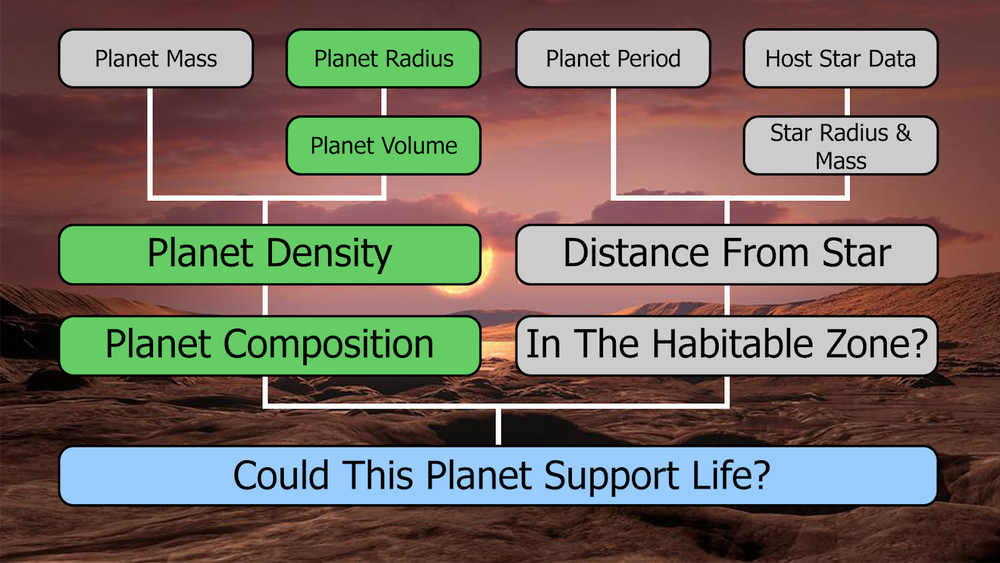Background on Planet Density

Final Request Tip
The planet density is a key part of your final request to the James Webb Team. If you want to give your request a good chance of being accepted, think about why planets of certain densities would be interesting to study. For example if your planet is a similar density to Jupiter, studying it may help scientists understand more about Jupiter. There is no single correct answer so try to be creative and keep an open mind!
Density Checkpoint Refresher
Task 3: Collaborate with Planet Mass Team to Find Average Planet Density
While you wait...
Next, input your value for planet volume in cell B3 of the Google Sheet below.
The planet's average density will be calculated automatically based on the following formula. The solution will appear in both Earth units (cell B4) and g/cm3 (cell B5).

Once you have calculated a solution, send the following message to the Mass team. Click here for instructions on how to send messages.
You will receive a similar message from the Mass team asking you to confirm their solution as well. Check that the Mass team’s solution is the same as your solution for the planet’s average density.
If you AGREE with the mass team’s solution:
If you
Click here for instructions on how to send messages.
If you DISAGREE with the mass team’s solution:
If you
If you are unable to find the error and cannot come up with the same answer, ask the Flight Director for assistance.
Planet Composition
What do the density and composition of your exoplanet reveal?




